Parshas Vayakhel opens with a section dealing with the laws of Shabbos: שֵׁשֶׁת יָמִים תֵּעָשֶֹה מְלָאכָה וּבַיּוֹם הַשְּׁבִיעִי יִהְיֶה לָכֶם קֹדֶשׁ שַׁבַּת שַׁבָּתוֹן לַד’ כָּל־הָעֹשֶֹה בוֹ מְלָאכָה יוּמָת, לֹא־תְבַעֲרוּ אֵשׁ בְּכֹל משְׁבֹתֵיכֶם בְּיוֹם הַשַּׁבָּת – “Six days shall labor be done, and on the seventh day it shall be holy to you, a Sabbath of Sabbaths to Hashem; whoever performs labor then shall be killed. Do not kindle a fire in all of your habitations on the day of Shabbos” (Shemos 35:2,3).
A Dark Approach
Now, as we know, there was a horrible group of people that existed in Tannaic times known as the “Tzedukim.” These followers of the heretic Tzadok spurned the authority of the Oral Torah, following the Written Torah only. Thus it was that they adhered to the simple intimation of the verses, rejecting the rabbinic interpretation.
One ramification of their corrupted approach relates to the passage above, which includes a prohibition involving fire on Shabbos. The followers of the rabbinic tradition understand that the prohibition is limited to the actual kindling of fire on Shabbos; as long as the fire is kindled before Shabbos, it may continue to burn and provide light on Shabbos itself (provided, of course, that no tampering to increase or maintain the flame occurs on Shabbos). But the Tzedukim, as was their wont, ignored the Oral ruling and abided instead by the literal connotation of the passuk. No fire means no fire, they said, and so they extinguished all fires and torches before the onset of the holy day and spent the entire Shabbos in the dark.
In the volume Maggid Meisharim, R’ Yosef Karo (author of the Shulchan Aruch) points out their folly; for in truth, even the plain meaning of the passuk belies their position. It states: “Lo seva’aru eish… b’yom haShabbos – Do not kindle a fire… on the day of Shabbos.” Now, this is the final passuk of the passage, which opened with an introduction regarding the holiness of the day as outlined above. Certainly, by the time we arrive at the verse prohibiting fire, we should know that Shabbos is the topic of discussion! Why, then, would the always word-conscious Torah not simply state: “Do not kindle a fire”? What was the purpose of the seemingly extraneous “Do not kindle fire… on the day of Shabbos”? Thus, we see that the Torah specifically aimed to preempt the Tzedukim’s mistake. It is specifically informing us that the prohibition against kindling is applicable only to the actual day of Shabbos itself; but any fire kindled beforehand is perfectly acceptable.
“Taking out from Their Hearts”
Now, we do find in other instances of such disputes that the Sages went out of their way to demonstrate their contempt of the Tzedukim’s erroneous position – a notion referred to as “L’hotzi miliban shel Tzedukim” (literally: “to take out from the heart of the Tzedukim”). One example of many involves the preparation of the ashes of the Parah Adumah (Red Cow). The Sages employed the rules of Scriptural exegesis to deduce a certain leniency. When an impure person immerses in a mikveh (ritual bath) to attain purity, he emerges in a sort of “midway” state, known as “tevul yom” (literally: “immersed of the day”). While his state of purity has improved from his immersion, he remains a tevul yom until nightfall, at which point he has basically regained full purity status. In any event, what the Sages derived was that a tevul yom – although not having attained the highest level of ritual purity – is nevertheless qualified to handle the Parah Adumah. But since this leniency was arrived at via the orally-transmitted rules of exegesis, it was not accepted by the Tzedukim. The bottom line here is that the Tzedukim did not rely on the leniency expounded by the Sages. The Sages’ response to this situation is recorded in the Mishnah (Parah 3:7):
מְטַמְּאִים הָיוּ הַכֹּהֵן הַשּׂוֹרֵף אֶת הַפָּרָה וּמַטְבִּילִין אוֹתוֹ לְהוֹצִיא מִלִבָּן שֶׁל צִּדוּקִים שֶׁהָיוּ אוֹמְרִים בִּמְעֹרְבֵי שֶׁמֶשׁ הָיְתָה נַעֲשֵׂית.
“(The Sages) would specifically cause the kohein designated to burn the Parah to become impure, such that he would immerse in a mikveh (and resume the preparations of the ashes on that very day, while still a tevul yom. They did so) in order to ‘take away from the heart of the Tzedukim’ who maintained it was necessary (for the kohein) to wait until nightfall before dealing with the preparations.”
This idea – explains R’ Ya’akov Barit (19th-century Rosh Yeshivah in Vilna) – actually illuminates the familiar and cherished practice of lighting Shabbos candles. As stated at the outset, the whole notion of lights on Shabbos was likewise a matter through which the Tzedukim exhibited their disdain for the Oral Law. They refused to accept the rabbis’ interpretation of the pesukim,following instead their understanding of the verses’ literal meaning. As such, they did not have any lights burning over the course of Shabbos – not even if they were ignited before Shabbos began.
Thus, we can understand the mitzvah of lighting the Shabbos candles (“bentching licht”) as mirroring the Sages’ efforts in instances like the Parah Adumah. That is, we are aiming specifically to discount the position of the misguided Tzedukim – “l’hotzi miliban shel Tzedukim.” They maintained that Shabbos must be a dark experience, devoid of any kindled lights. And so we do just the opposite: we demonstrate our fealty to rabbinic authority and acceptance of their interpretation by specifically igniting lights before Shabbos, to provide illumination even once Shabbos begins.
The sefer Ma’aseh Rav records many of the customs and practices of the venerated Vilna Ga’on. One of these relates to this mitzvah, as the Ga’on was particular to light an abundance of candles. R’ Shlomo Hakohein – disciple of the aforementioned R’ Ya’akov Barit – explained this practice in light of the above. That is, being that a major function of these lights was to publicize the rabbinic position, it was done in grand style, so to speak – through a profusion of light-giving candles (Peninim MiShulchan Gavohah, parshas Vayakhel).









